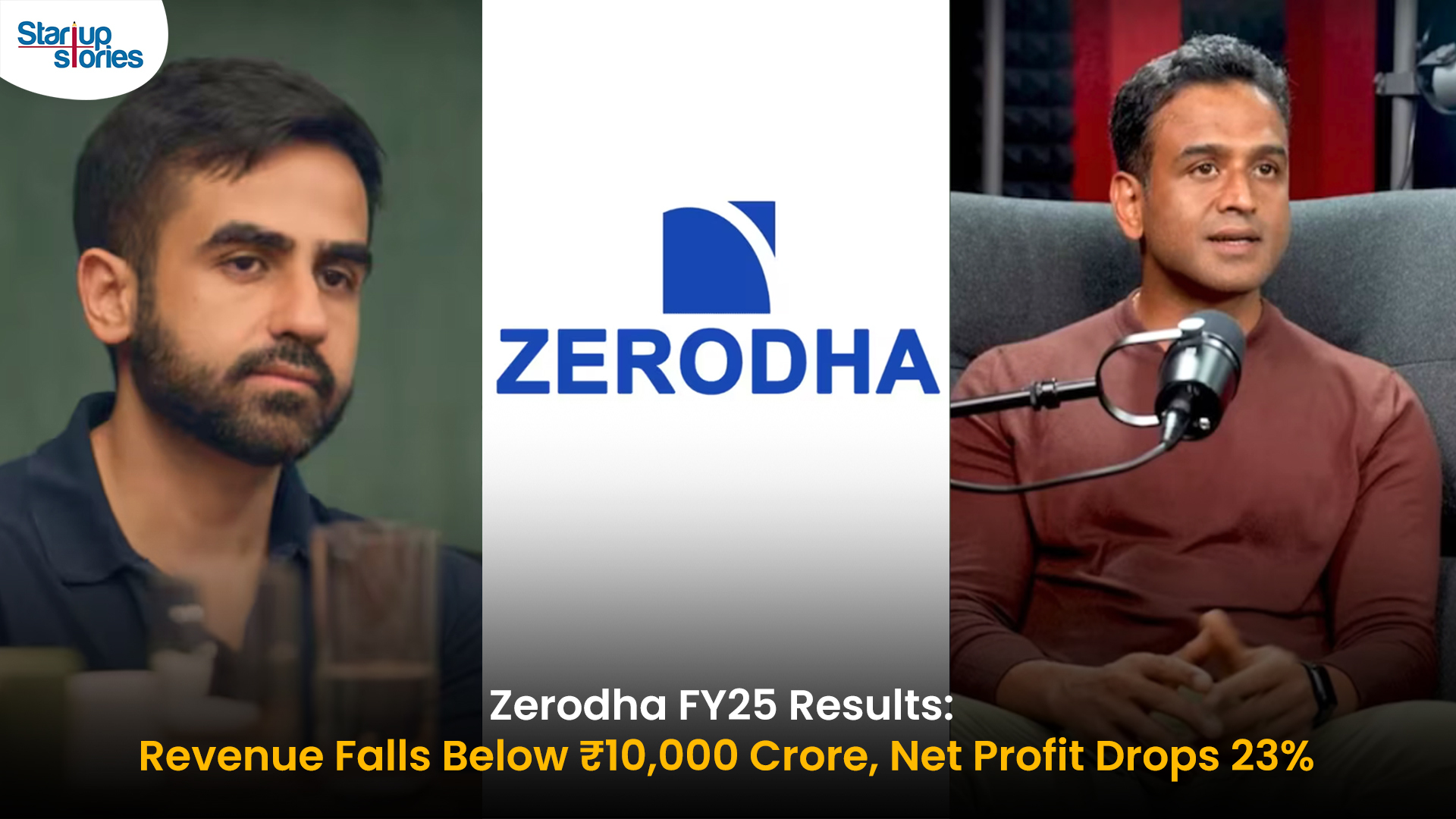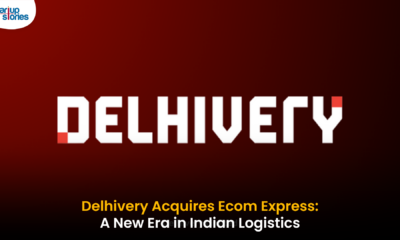Latest News
Swiggy Instamart Aims to Boost Sales per Order!

Swiggy’s quick-commerce service, Instamart, is actively working to increase the average amount customers spend per order. While the service has seen a rapid growth, its average order value (AOV) of ₹499 is lower than some competitors, prompting the company to implement several strategies to enhance profitability.
Strategies to Boost Sales per Order
More Products
Instamart is expanding its product range by adding a wider variety of items, including non-food products. This diversification aims to encourage customers to purchase more items per order, thereby increasing the overall AOV.
Bigger Warehouses
To support this expansion, Swiggy is investing in larger warehouses that can stock a more extensive inventory. By increasing storage capacity, Instamart can offer a broader selection of products, making it more convenient for customers to find everything they need in one place.
Targeted Marketing
Instamart is employing targeted marketing strategies to attract customers who are likely to spend more. By analyzing customer data and purchasing behavior, Swiggy can tailor promotions and advertisements to encourage higher spending per transaction.
Why It Matters
Increasing the average order value is crucial for Instamart’s profitability. By encouraging customers to spend more per order, the company can reduce its costs and improve its bottom line. A higher AOV can lead to better margins and help offset operational expenses associated with quick delivery services.
Competitive Landscape
However, achieving this goal won’t be easy. The quick-commerce market is highly competitive, with other companies like Blinkit, Zepto, and BigBasket also vying for customers. Instamart will need to continue innovating and finding new ways to attract and retain customers amidst this fierce competition.
Financial Performance and Market Position
In recent financial reports, Swiggy noted that Instamart generated ₹3,221.4 crore in FY23, reflecting a 39.7% increase from the previous fiscal year. The average order value has risen by 20% to around ₹460, indicating that efforts to enhance customer retention and basket sizes are beginning to yield results.
Delivery Fee Adjustments
As part of its strategy to boost profitability, Swiggy may also consider increasing delivery fees for Instamart orders. According to Chief Financial Officer Rahul Bothra, the company plans to gradually raise these charges while ensuring that they remain competitive compared to other players in the market.
Conclusion
Swiggy Instamart is focusing on increasing sales per order through product diversification and improved warehousing. This strategic approach aims to enhance profitability and strengthen its position in the competitive quick-commerce market. By understanding and catering to evolving consumer preferences, Instamart is well-positioned to drive sustainable growth in the future.
Latest News
Kuku FM’s $200 Million IPO: Mebigo Labs Hires Top Bankers to Lead Public Listing

Kuku FM’s parent company, Mebigo Labs, has hired leading investment banks to prepare for a 200 million dollar IPO in India, marking a major milestone for the country’s digital audio ecosystem. The Mumbai-based company has reportedly appointed Kotak Mahindra Capital, Axis Bank and Morgan Stanley’s India unit to manage the proposed share sale, which is likely to be launched on Indian stock exchanges once key regulatory steps are completed. This move signals strong intent to tap public markets and test investor appetite for subscription-led regional audio platforms in India.
The planned IPO proceeds are expected to help Kuku FM expand its content library, strengthen its regional language offerings and invest in technology to enhance user experience. With a focus on Hindi, Marathi, Tamil and other Indian languages, Kuku FM aims to capture the fast-growing audience in Tier 2 and Tier 3 cities seeking affordable audiobooks, courses and storytelling content. The funds could also provide additional firepower for marketing, partnerships and product innovation, helping the platform compete more aggressively in India’s crowded digital entertainment and creator economy landscape.
Founded in 2018, Kuku FM has built a subscription-driven business model and has reportedly scaled to millions of paying users, backed by multiple funding rounds from prominent investors. Its decision to pursue a 200 million dollar IPO positions it as one of the first major Indian audio platforms to attempt a public listing, potentially paving the way for other podcast and niche content startups to follow. As the IPO process moves forward, Kuku FM’s performance in the public markets will be closely watched as a key indicator of how investors value regional, knowledge-first audio platforms in India’s booming digital economy.
Latest News
Zerodha Reports 23% Profit Decline in FY25 as Revenues Miss Target

Zerodha experienced a challenging FY25, as its revenue fell 11.5% to ₹8,847 crore and net profit dropped 22.9% to ₹4,237 crore. This decline reflects tougher regulatory conditions, lower trading volumes, and increased operational costs in the brokerage market, all of which impacted core earning segments for the company.
Despite these headwinds, Zerodha improved its operating margin to 63.78% and built up significant cash reserves, reporting ₹22,679 crore in bank balances. Salary expenses and director remuneration increased, but disciplined cost controls helped the company maintain profitability and a debt-free balance sheet. The drop in active clients and increased compliance costs further contributed to the profit contraction.
Looking ahead, Zerodha’s resilience is supported by its robust cash position and operational efficiency. Maintaining steady margins, diversifying product offerings, and investing in technology positions the company to withstand future regulatory fluctuations and changing market sentiment reinforcing its status as one of India’s leading brokerage firms.
Latest News
Zoho Pay Debuts as India’s New UPI Challenger, Taking on PhonePe, Paytm, and Google Pay

Zoho Corporation has expanded its fintech portfolio with the launch of Zoho Pay, a UPI-based payments app built to challenge India’s top digital payment giants such as PhonePe, Paytm, and Google Pay. The new app supports peer-to-peer transfers, bill payments, QR-based transactions, and merchant settlements in a streamlined interface. Available as both a standalone app and an integrated feature inside Zoho’s privacy-driven messenger Arattai, Zoho Pay enables users to handle chats and payments in one platform, emphasizing data privacy and Made-in-India innovation.
Through seamless integration with Arattai, Zoho Pay allows users to send or request payments, split expenses, and conduct UPI-based transactions directly in their chat windows. Users can link bank accounts, scan dynamic QR codes, and receive audio confirmations of payments, ensuring speed and security. This design mirrors the simplicity of India’s leading UPI apps but is powered by Zoho’s non-advertising, privacy-first model. The integration aligns with Zoho’s mission to build a self-reliant digital ecosystem, where messaging and money management coexist securely.
In the competitive digital payments market, Zoho Pay differentiates itself through its tight business software integration with apps like Zoho Books, Zoho Payroll, and Zoho Commerce, offering small businesses unified access to payments, billing, and accounting. The company is also expanding its reach with POS devices for merchants featuring UPI QR, card payments, and instant reconciliation tools. With founder Sridhar Vembu’s vision of a ‘Chat + Pay’ ecosystem, Zoho Pay reflects a bold step toward redefining India’s fintech scene with a secure, ad-free, and locally developed alternative to global payment platforms.












droversointeru
April 12, 2025 at 8:59 pm
My brother suggested I would possibly like this website. He was once entirely right. This put up actually made my day. You cann’t imagine simply how a lot time I had spent for this information! Thank you!
Kuwin
November 5, 2025 at 2:56 pm
kuwin sở hữu kho game đa dạng từ slot đến trò chơi bài đổi thưởng, mang đến cho bạn những giây phút giải trí tuyệt vời.
谷歌蜘蛛池
November 8, 2025 at 3:54 pm
利用强大的谷歌蜘蛛池技术,大幅提升网站收录效率与页面抓取频率。谷歌蜘蛛池
J88
November 10, 2025 at 6:10 am
Đến với J88, bạn sẽ được trải nghiệm dịch vụ cá cược chuyên nghiệp cùng hàng ngàn sự kiện khuyến mãi độc quyền.
站群程序
November 11, 2025 at 8:43 pm
采用高效谷歌站群策略,快速提升网站在搜索引擎中的可见性与权重。谷歌站群
MM88
November 12, 2025 at 12:45 am
Với giao diện mượt mà và ưu đãi hấp dẫn, MM88 là lựa chọn lý tưởng cho các tín đồ giải trí trực tuyến.
GO88
November 17, 2025 at 3:07 am
Tham gia cộng đồng game thủ tại Go88 để trải nghiệm các trò chơi bài, poker phổ biến nhất hiện nay.
iwin
December 1, 2025 at 3:40 am
iwin – nền tảng game bài đổi thưởng uy tín, nơi bạn có thể thử vận may và tận hưởng nhiều tựa game hấp